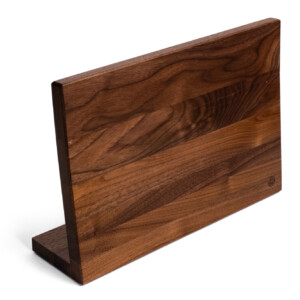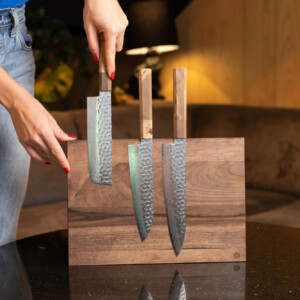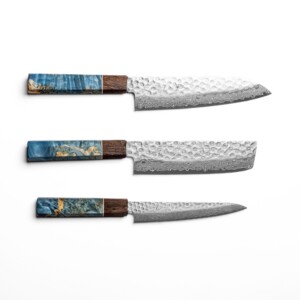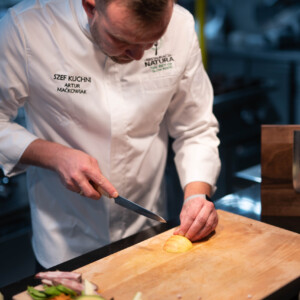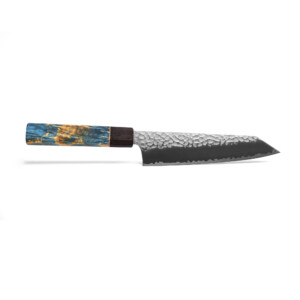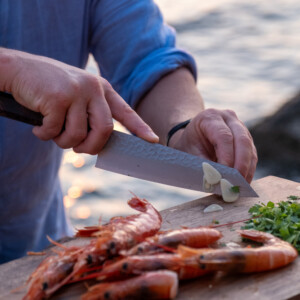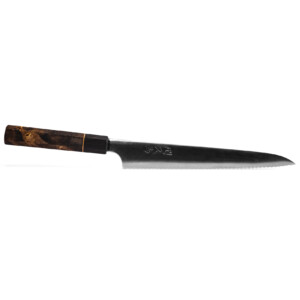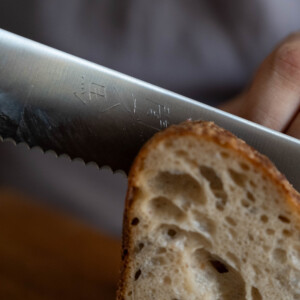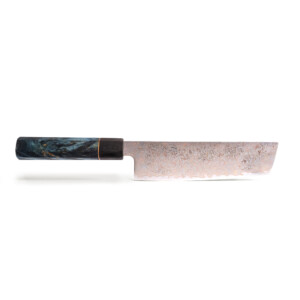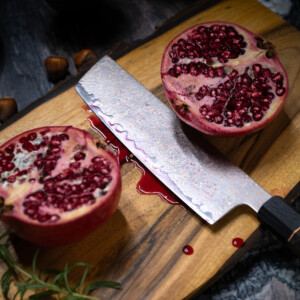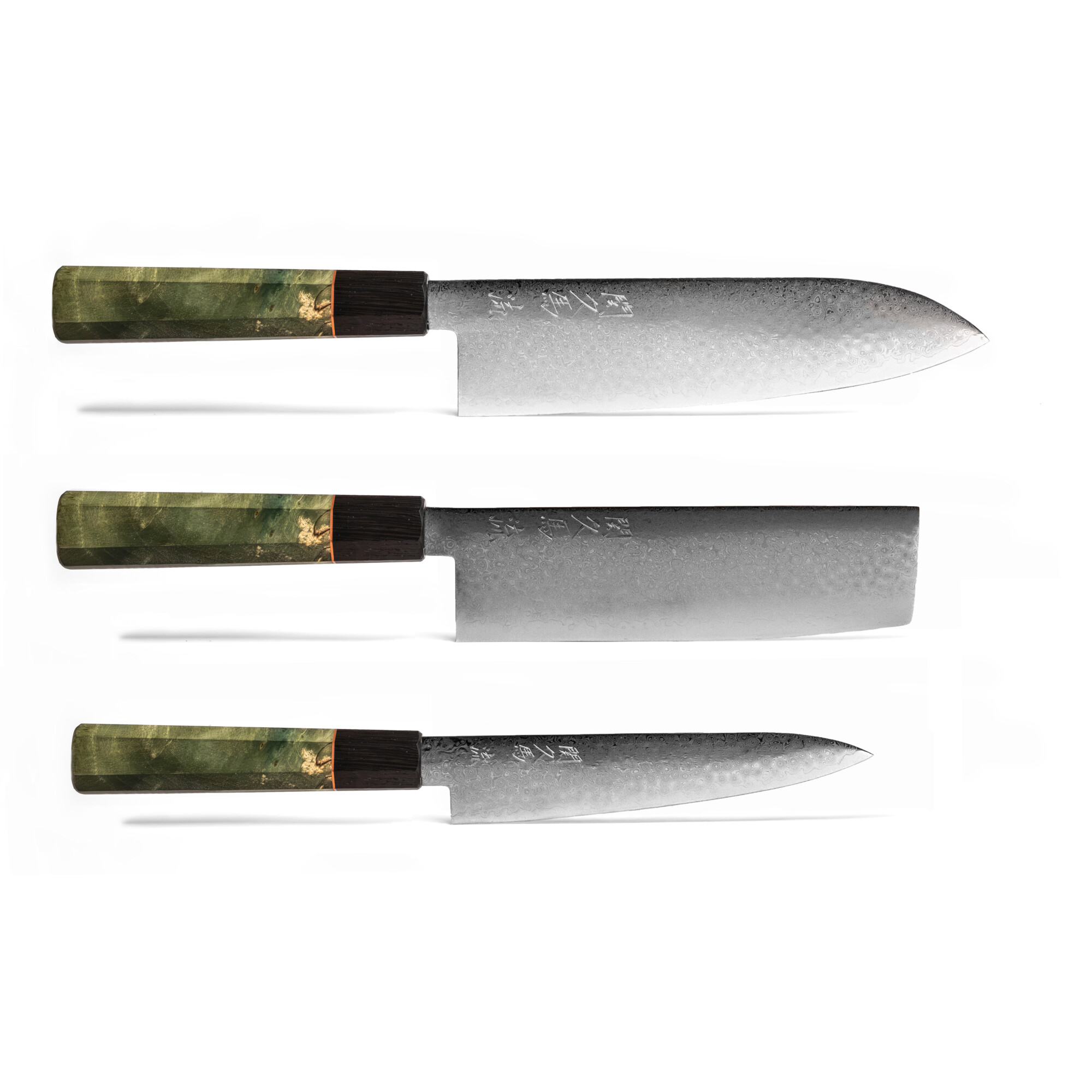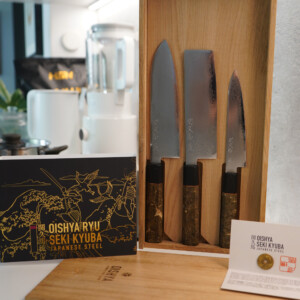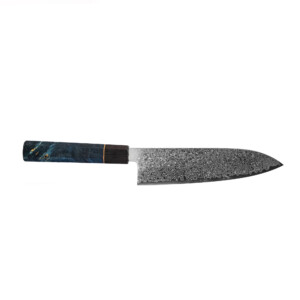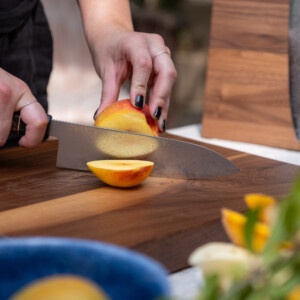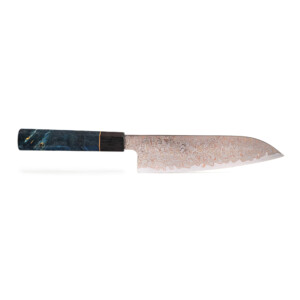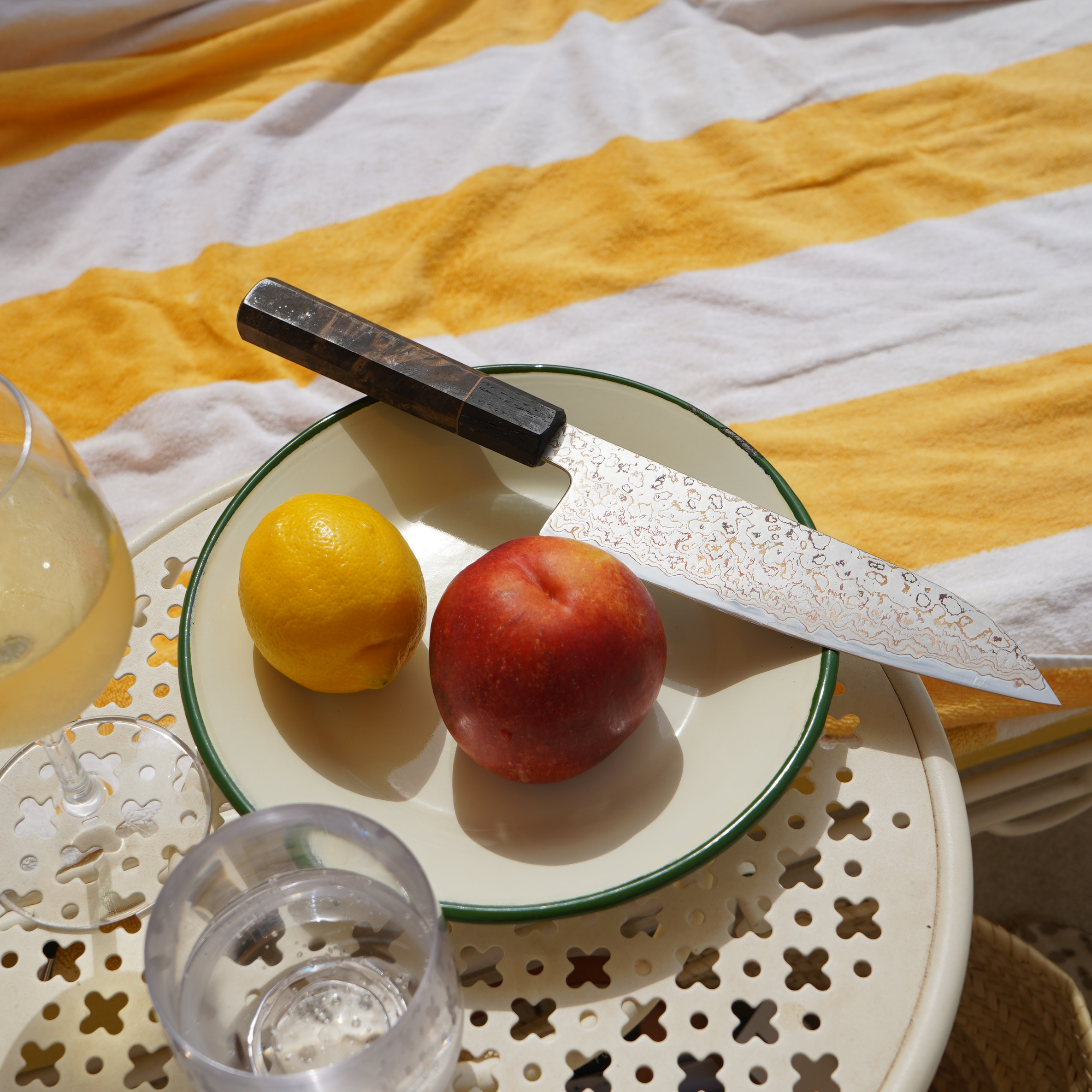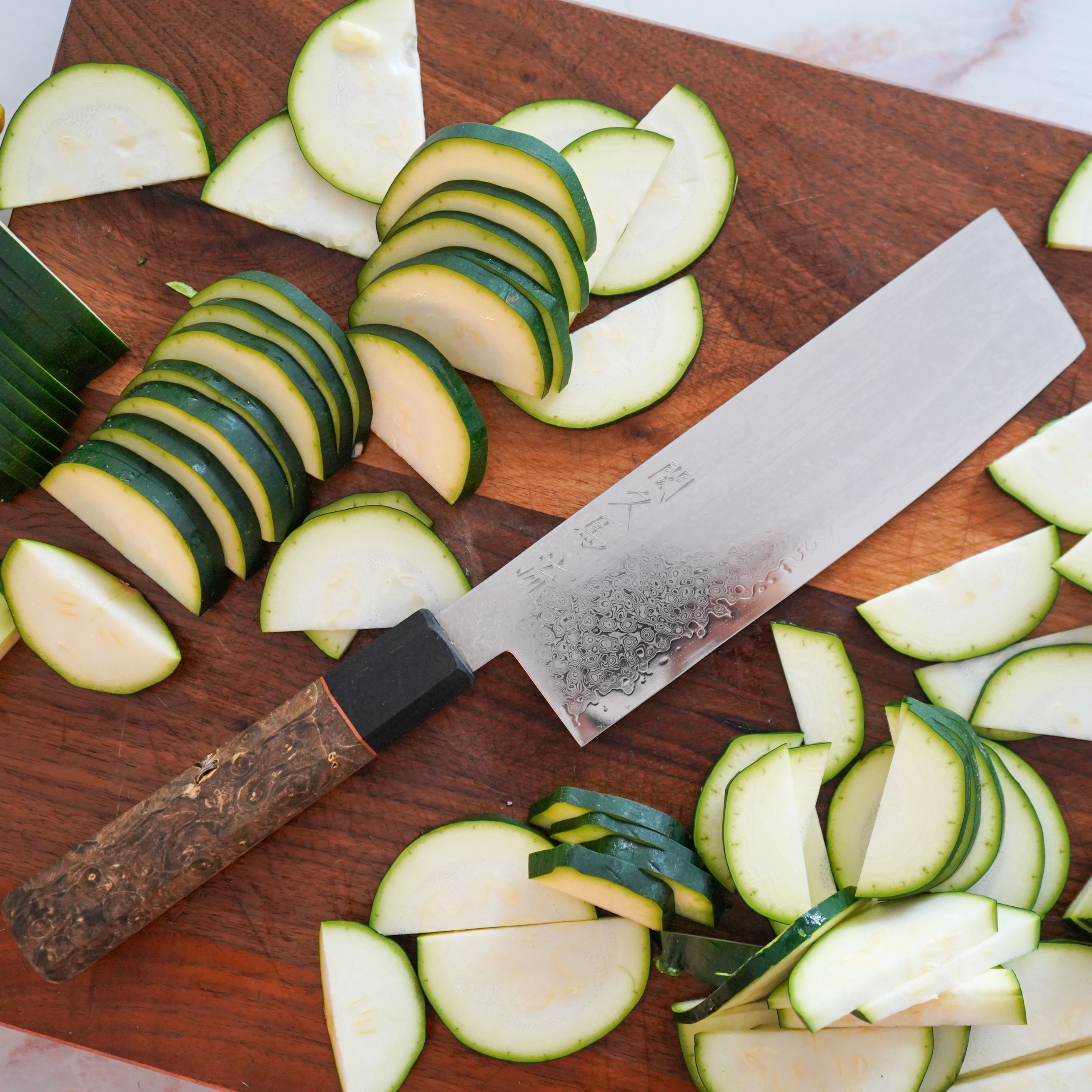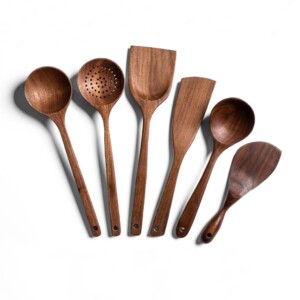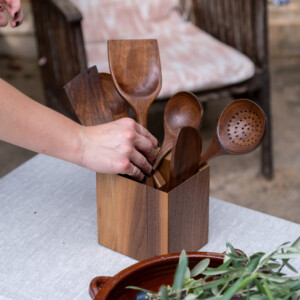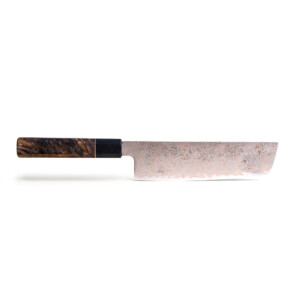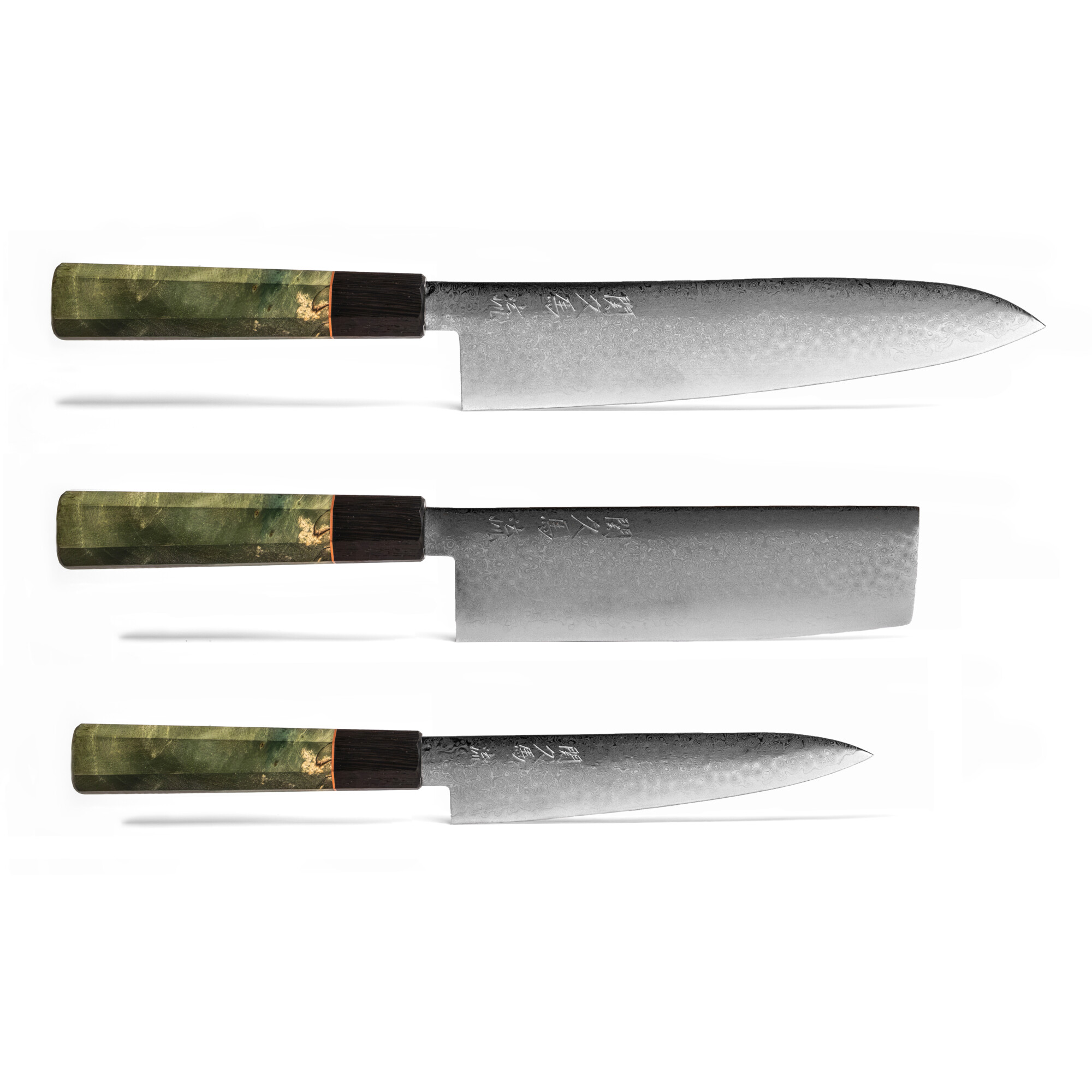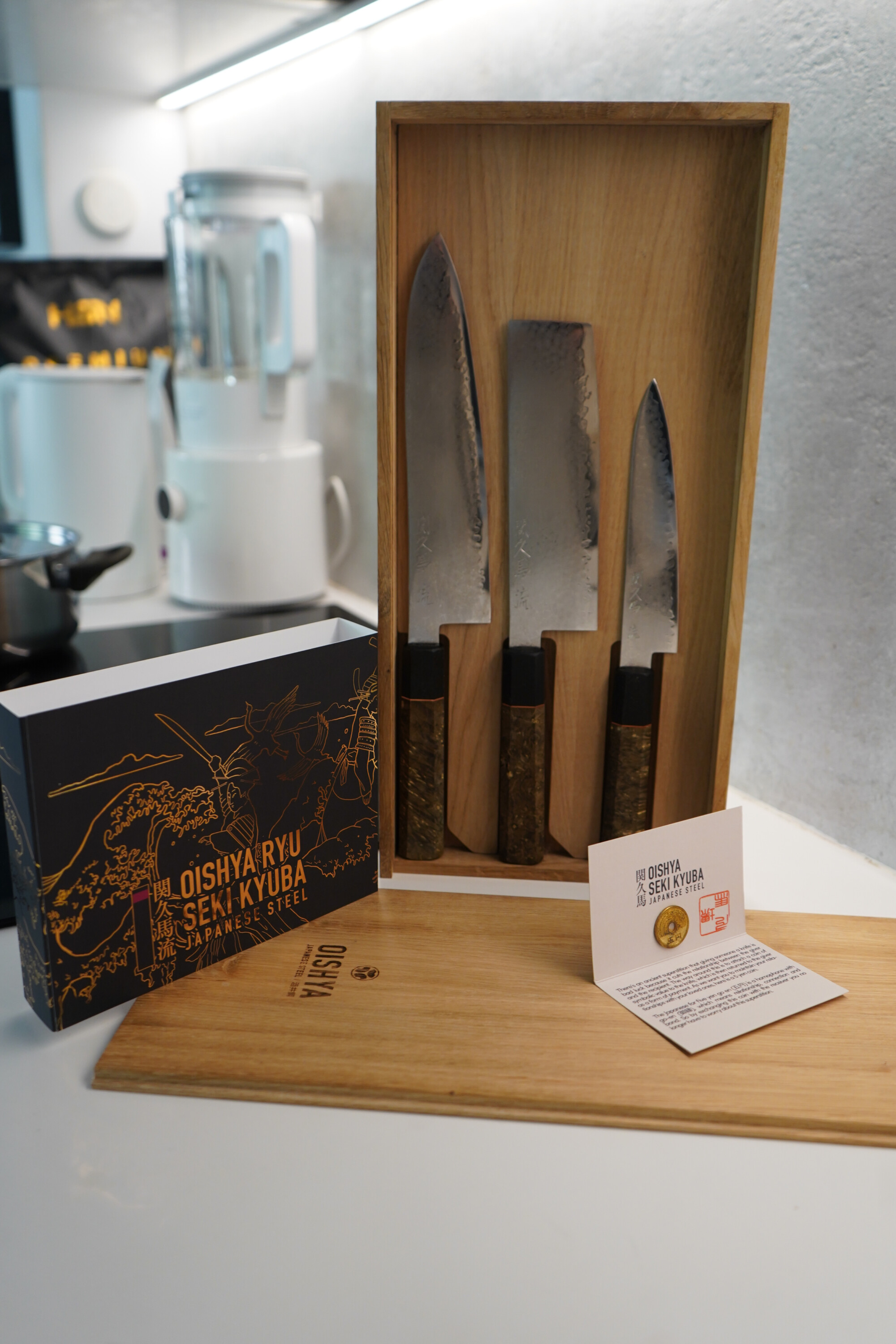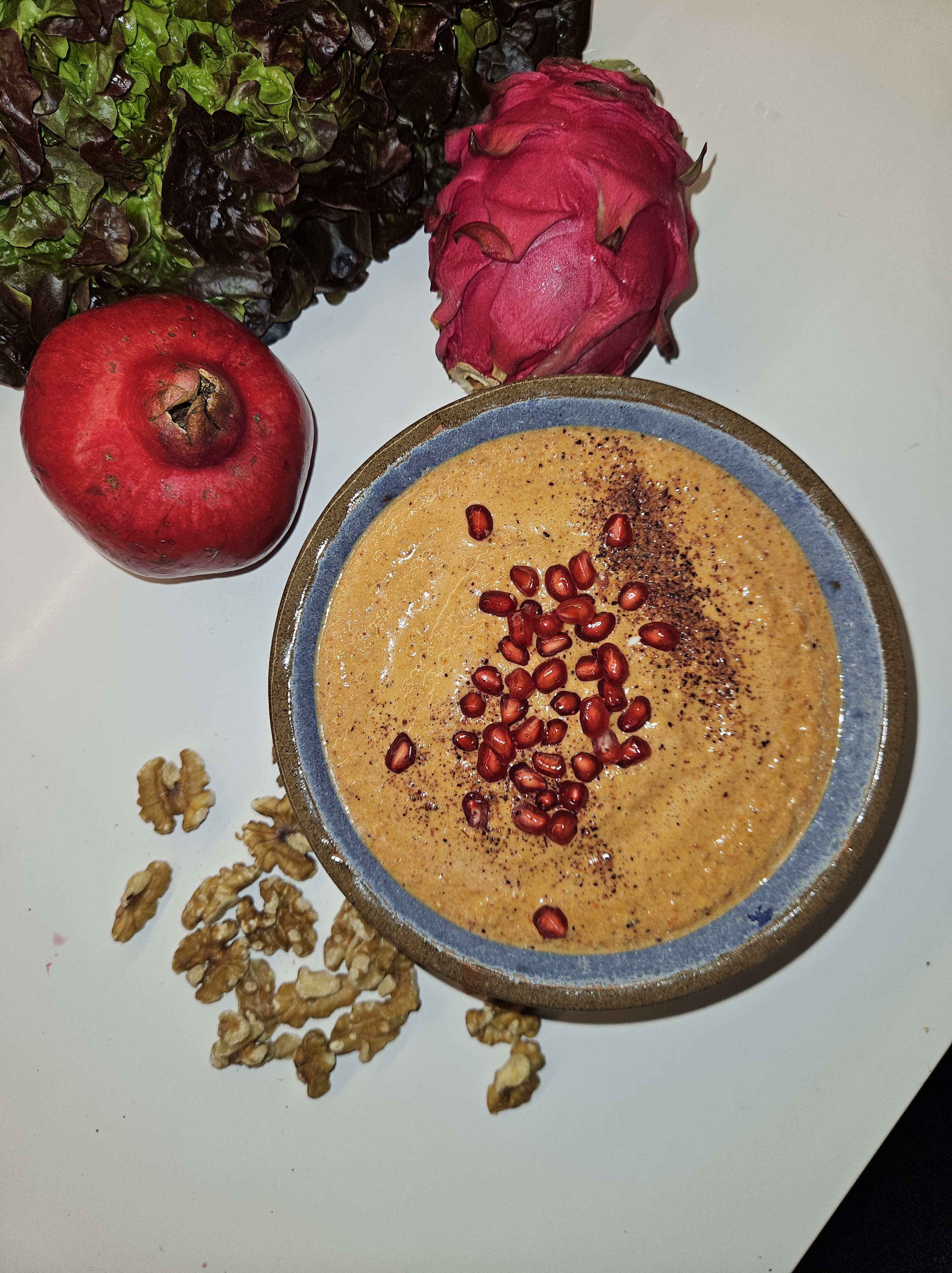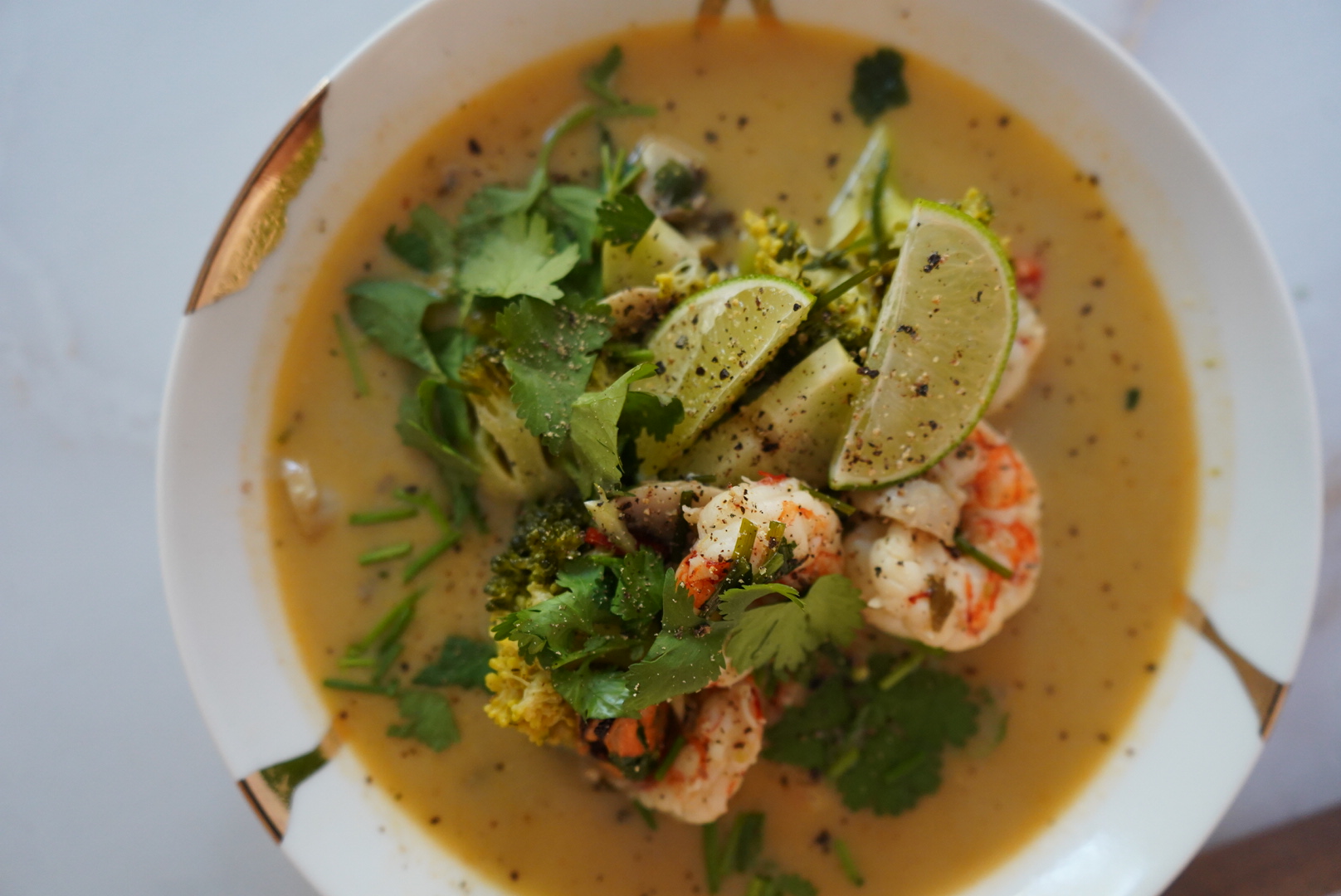Whether you’ve found a knife in one of your old toolboxes or accidentally left your favourite non stainless kitchen knife in the dishwasher (or your forgetting family member did it despite you telling them 100 times not to do so…) chances are you have encountered a nasty case of rust. Ps. Actually, stainless knives do rust too.
Many old timers considered rust the sign of a knife’s quality, but a rusted knife is simply dangerous, useless and ugly.
So before we dig into the methods of how to remove a rust from kitchen knife (or any kind of cutlery for that matter), we first need to understand what is rust and how does a rusted knife affect (if at all) the food hygiene.
What is Rust?

Rust is due to the oxidation of iron and it occurs when the metal is in contact with water for longer periods. Iron is not dangerous for health, on the contrary, our body needs it.
If you only want to some methods for removing rust, skip these next two sections, but it will be helpful to learn more about why your blade is rusting. We’ve written many articles on how to maintain your kitchen knives in their pristine condition, gave many tips, helped select the best and safest storage methods based on your conditions and preferences, and helped you check if your knife is still sharp. Now, let’s tackle the nature of rust.
Rust is the common name for a compound called iron oxide — that reddish-orange flaky stuff you see peppered on some metal. This forms when iron and oxygen react to moisture. The item doesn’t even have to be ‘in’ water exactly, it could just be the presence of water in the air that settles on the item and reacts with the metal.
How Stuff Works defines rusting as corrosion:
Iron (or steel) rusting is an example of corrosion — an electrochemical process involving an anode (a piece of metal that readily gives up electrons), an electrolyte (a liquid that helps electrons move) and a cathode (a piece of metal that readily accepts electrons). When a piece of metal corrodes, the electrolyte helps provide oxygen to the anode. As oxygen combines with the metal, electrons are liberated. When they flow through the electrolyte to the cathode, the metal of the anode disappears, swept away by the electrical flow or converted into metal cations in a form such as rust.
Why do knives rust?
If you combine those three ingredients: iron, water, and air – you get rust. For those who don’t know, iron is the secret ingredient of the steel found in your knife blades. So when you combine your knife with air and water, you get rust.
“But, wait, my blade is stainless steel,” you might be thinking. Unfortunately, stainless steel is only stain-resistant, not stain-proof. The old saying goes “Stainless… not stain-free.” Depending on quality of the stainless steel, your knives may be more or less resistant. If you leave non-stainless, high carbon knife in water for more than a couple of minutes, you can be sure that it will get some rust. That’s why high carbon knives are recommended for professional cooks who don’t mind putting more effort into maintenance. High carbon knives usually guarantee better grip and cut.
It’s also worth nothing People in the 1800s found iron-chromium alloys to be more resistant to corrosion because they create a protective layer. Unfortunately, that means the blade will still rust (unless it’s ceramic) under certain conditions as long as it’s considered steel.
How a very rusty knife gets cleaned?
The below is an extreme case of a very rusty knife. It’s a very satisfying video as you get to see how a sharpener cleans the blade to its almost-original stage.
How to remove rust from your knife... if you don't have a dedicated sharpening stone
Each of the below ‘home’ methods can be used in conjunction with one another or repeated for particularly rusty blades. After removing the big chunk of rust, we still recommend purchasing and resharpening the blade with a natural or a synthetic sharpening stone after any method to ensure a sharp and a safe blade.
Method no. 1 – The Baking Soda
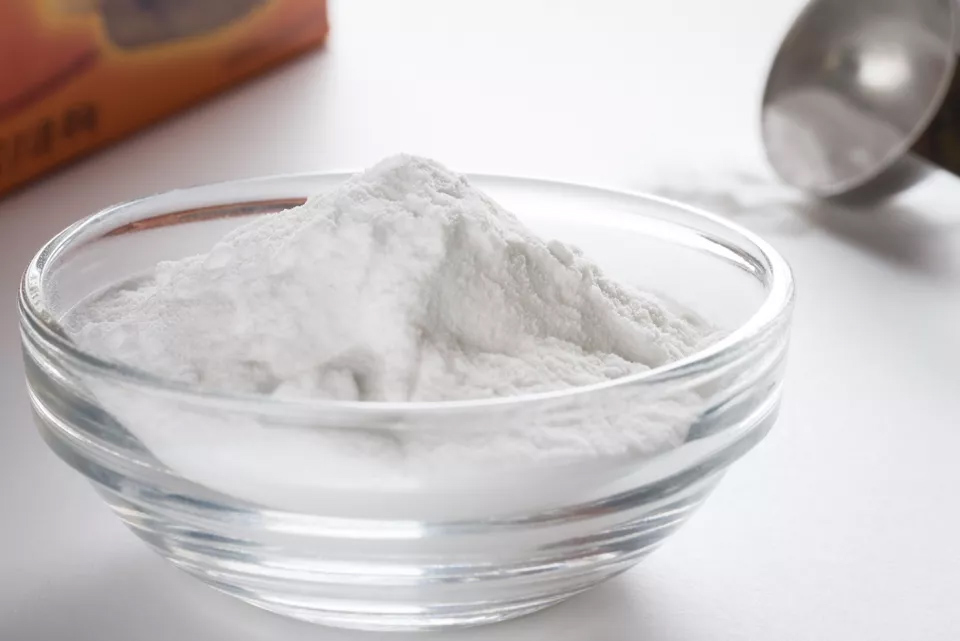
You will need the following materials:
- Baking soda
- Water
- A toothbrush
- Steel wool (or sponge)
- A cloth
1. Clean Your Knife
The first thing you need to do is to thoroughly clean the blade of your knife because dirt can interfere with the removal of rust. Try to avoid water because (surprise, surprise) that’s what mostly made your knife rust. Instead, use some sort of cleaning solution and wipe it down with a cloth.
2. Create baking soda paste
Now we’ll get to baking. Just kidding. Create a little bit of baking soda paste. You can pour a fair amount of baking soda into a bowl and add some water or lemon juice if you’re feeling creative. Stir it up until it becomes a paste.
3. Scrub with toothbrush
Apply the thick paste on a toothbrush and liberally speed it across the blade. You can scrub only with the toothbrush if the rust isn’t too severe or set in.
4. Use steel wool or an semi-abrasive sponge
For extremely rusty blades, you’ll need a little more abrasion to help remove the rust. If you don’t have a sharpening stone with a lower grit (600-1000), a steel wool is commonly recommended though it can mess up your blade if you scrub too hard. Another alternative is a slightly abrasive sponge. Be careful not to scrub too hard because you can scratch the blade or ruin the finish. Especially when it’s a Japanese knife with engraved in kanji/katakana name of the blacksmith. You would not like to remove it, would you?
5. Wipe the blade clean
Finally, clean off the blade with a piece of cloth to remove the excessive baking powder. If you want to be really good to your blade, you can apply some mineral oil afterward to make sure it’s lubricated and protected from rust in the future.
Method no. 2 – The Vinegar Bath
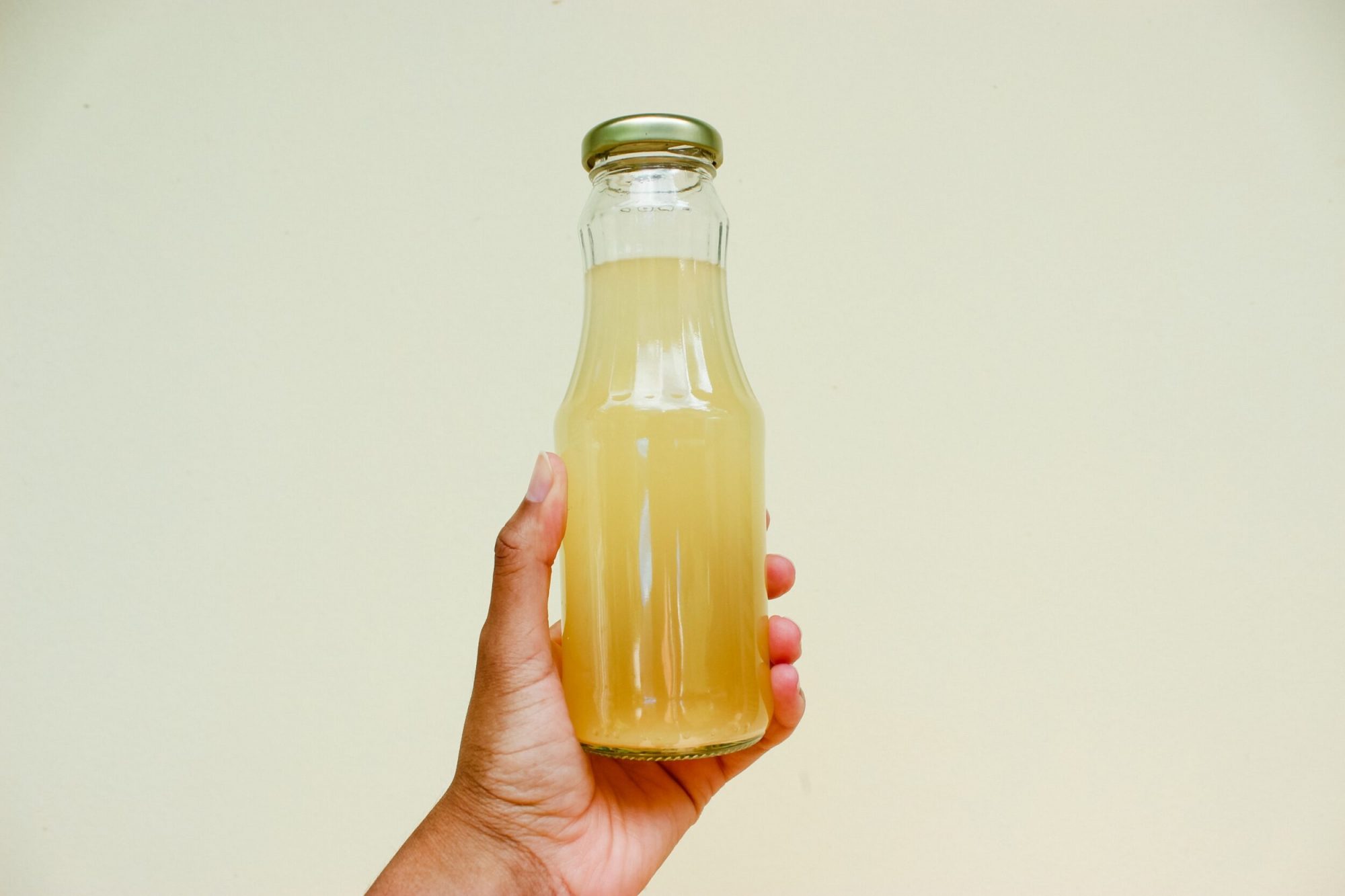
You will need the following materials:
- Pan or a cup
- White Vinegar (apple vinegar will do also)
- A sponge
- A cloth
1. Pour vinegar into a cup or pan
Be sure to use white vinegar, which contains a substance called acetic acid that will attack the rust. Other types of vinegar may leave stains.
2. Soak the rusty knife
If you don’t want to soak the whole blade (or knife), you can also soak a paper towel in the vinegar and wrap it around the blade. Only leave the knife it for about five minutes. Any longer and you risk damaging your blade.
3. Wipe down the blade
After it’s done soaking, you’ll want to wipe down the blade. At this point, you may still want to do the baking soda or WD-40 method if there is still a little rust.
Method no. 3 – WD-40
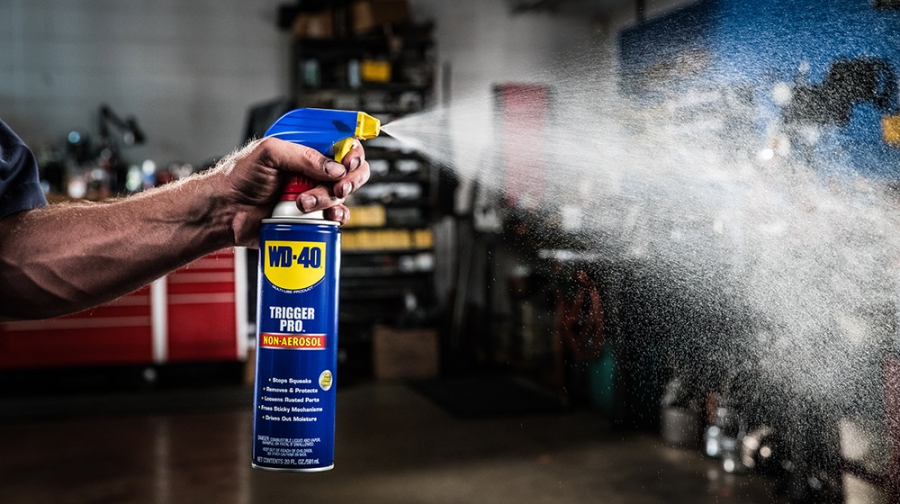
You will need the following materials:
- WD-40
- A fine sandpaper,
- A cloth
We recommend this method for a larger knife like a machete or a knife you won’t be using for food preparation since WD-40 can be harmful if ingested. But it’s a quick and effective method of rust removal. Don’t use it for lubricant.
1. Spray WD-40 on the blade
This step needs little explanation. Spray the affected parts of the blade with a spritz of WD-40.
2. Gently sand the blade
You’ll want to use very fine sandpaper (think 400) to gently get the rust off the blade. Make sure not to touch the edge or you’re liable to mess it up.
3. Wipe it down
That should be enough to do it. If the rust is heavier, you may want to do one of the two previous methods. Again, avoid if you’re doing any food prep with the knife.
Natural rust removal methods
We don’t recommend it, but if you don’t have anything else at hand and you cry when looking at your knife’s state – use what you have at hand.
The Potato Method
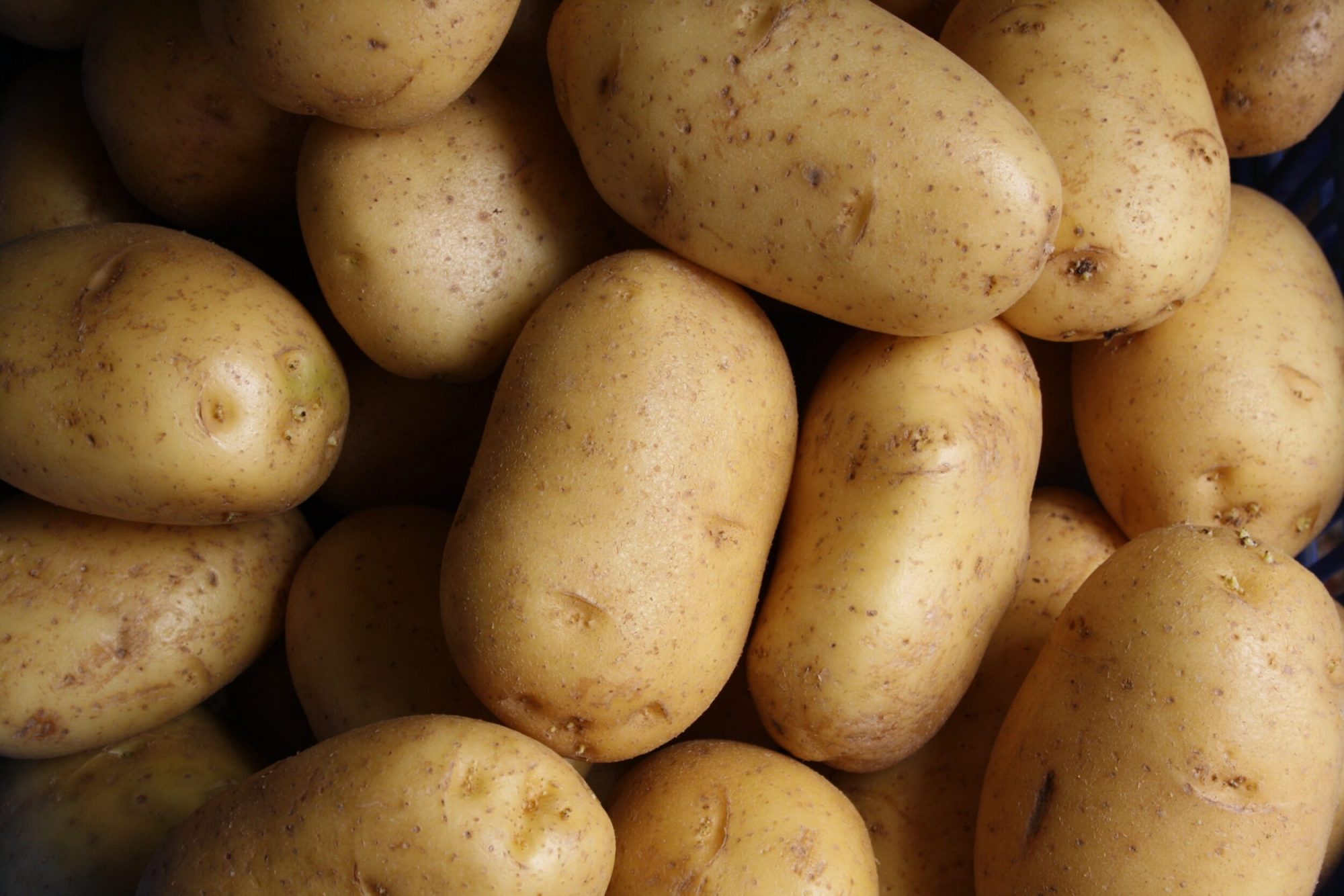
Certain foods also act as a good sources for rust removal. The potato is actually remarkably effective food for removing rust because of its oxalic acid. Simply stick your knife into the potato for a few hours. After you remove it, wipe the blade with oil and the rust should be gone.
The Onion Method

Onions are another food that helps get rid of rust naturally. If you saw back and forth into an onion, the rust will begin to come off by itself. The sulphonic acids in onions are they key ingredients in getting your blade cleaned.
The Dirt Method
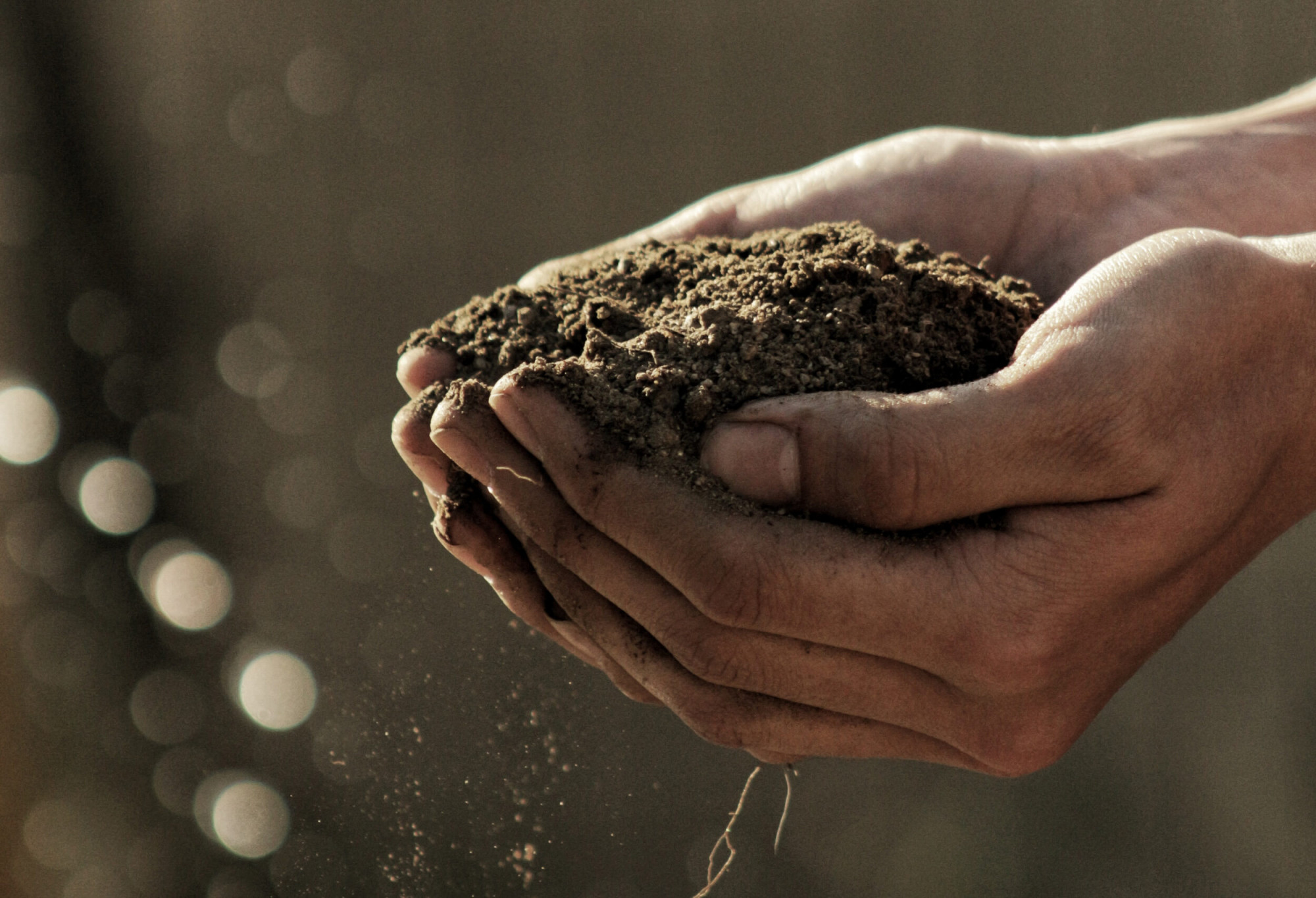
Another more natural way many people suggest is to plunge your rust-covered knife into rich soil about two dozen times and then wipe it clean.
Everyone has their own method, so let us know in the comments what you do. We, as always, recommend getting a combo sharpening stone – ideally 1000/6000, which can easily remove blade’s particles with 1000 grit and finish polishing with 6000.
But if nothing helps or/and you’re too lazy to try the above methods, then there is always another solution….
Just grab a new knife!
If your knife is beyond the amount of work you’re willing to put into it, it’s OK to get a new shiny knife (just promise us to treat it better than its predecessor!). We have many of knives, sharpening stones and storage items in stock that you’re welcome to look at.
